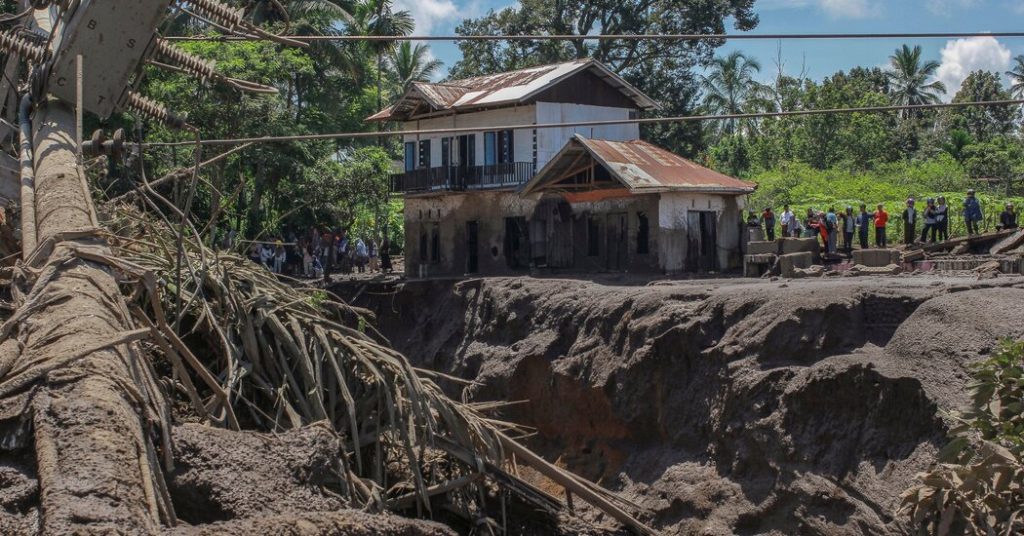Heavy rain in Indonesia over the weekend led to devastating flash floods and cold lava flow from Mount Marapi, an active volcano on the island of Sumatra. The rain triggered lahars, or cold lava mudslides, which can be extremely destructive and carry away almost anything in their path. These lahars were exacerbated by an overflowing river, causing severe damage to four areas in western Sumatra. Nearly 200 houses were inundated, and in Agam alone, 159 people were evacuated as the mud deposits reached adult calves in some areas. By Sunday night, 37 residents had been killed and 17 others were reported missing.
Lahars are a common occurrence in Indonesia, especially after heavy rainfall triggers volcanic activity. These moving flows of wet concrete-like mud can quickly grow in size and speed as they rush down volcanoes, incorporating more debris and water as they move downhill. This can result in devastating consequences for nearby towns and communities, as buildings, bridges, and roads are buried or destroyed by the powerful flow of cold lava. It is crucial for authorities to monitor volcanic activity and weather conditions to mitigate the risks associated with such natural disasters.
The United States Geographical Survey highlights the destructive force of lahars and emphasizes the need for vigilance and preparedness in regions prone to volcanic activity. In the case of the recent events in Sumatra, the Indonesian disaster management agency played a crucial role in coordinating evacuations and providing support to affected communities. The agency reported that 37 residents had lost their lives due to the flash floods and cold lava flow, while 17 others were still missing.
The heavy rain and subsequent lahars in western Sumatra are a stark reminder of the power of nature and the importance of disaster preparedness and response. The need for adequate infrastructure and early warning systems in vulnerable areas cannot be overstated, as natural disasters like these can have devastating consequences on human life and property. In the aftermath of the flash floods and cold lava flow, communities in Sumatra will have to come together to rebuild and recover from the destruction caused by this tragic event. It is important for authorities to assess the damage, provide assistance to those affected, and take steps to prevent similar disasters in the future.
As Indonesia continues to grapple with the aftermath of the recent natural disasters, it is essential for authorities to prioritize the safety and well-being of their citizens. This includes investing in early warning systems, disaster preparedness training, and infrastructure improvements to reduce the risks associated with volcanic activity and heavy rainfall. By taking proactive measures to mitigate the impact of such events, Indonesia can better protect its communities and prevent unnecessary loss of life and property in the future. The resilience and strength of the Indonesian people will be tested as they work together to overcome the challenges posed by these natural disasters and rebuild their lives in the wake of tragedy.


